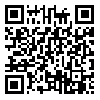BibTeX | RIS | EndNote | Medlars | ProCite | Reference Manager | RefWorks
Send citation to:
URL: http://tumj.tums.ac.ir/article-1-491-en.html
Background: Anti-dsDNA antibodies frequently found in the sera Systemic Lupus Erythematosus patients, particularly in active disease stage. Nowadays exploit different eukaryotic and prokaryotic dsDNA as antigen source and different reagents as binder. The aim of this study to compared two dsDNA different sources and tow different kinds of reagents for binder in ELISA test.
Methods: In this study bacterial genomic DNA from E.coli (ATCC 25922) and genomic DNA from calf thymus extracted with high purity and were used as antigens for IgG anti-dsDNA detection by ELISA. To coat dsDNA in microtiter wells, tow different kinds of reagents including methylated -BSA and poly-l-lysine (for pre-coating) are used. Sera from systemic lupus erythematosus patients and from normal blood donors are used to assess sensitivity and specificity of our ELISA test in compared with IF test and commercial kits.
Results: Our results displayed pre-coating of microtiter plates with methylated -BSA reduce nonspecific binding reaction and the relative sensitivity and specificity of ELISA increased when calf thymus DNA is employed as antigenic source in compared with IF test and commercial kits 80%, 88% and 100%, 98% respectively, but when E.coli DNA is used 73%, 69% and 85%, 79%, respectively.
Conclusion: The genomic DNA from calf thymus is a potentially useful source of antigen for detection of anti-dsDNA by ELISA. Also the use of methylatted- BSA could have an effective role in reducing of nonspecific binding reactions.
| Rights and permissions | |
 |
This work is licensed under a Creative Commons Attribution-NonCommercial 4.0 International License. |





